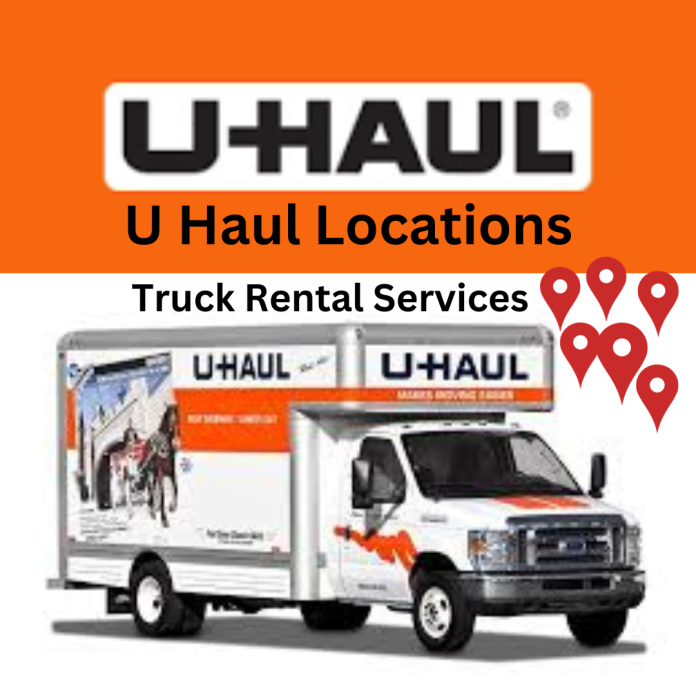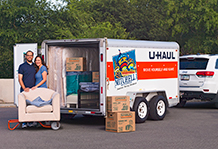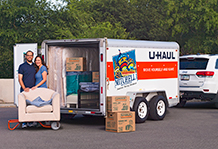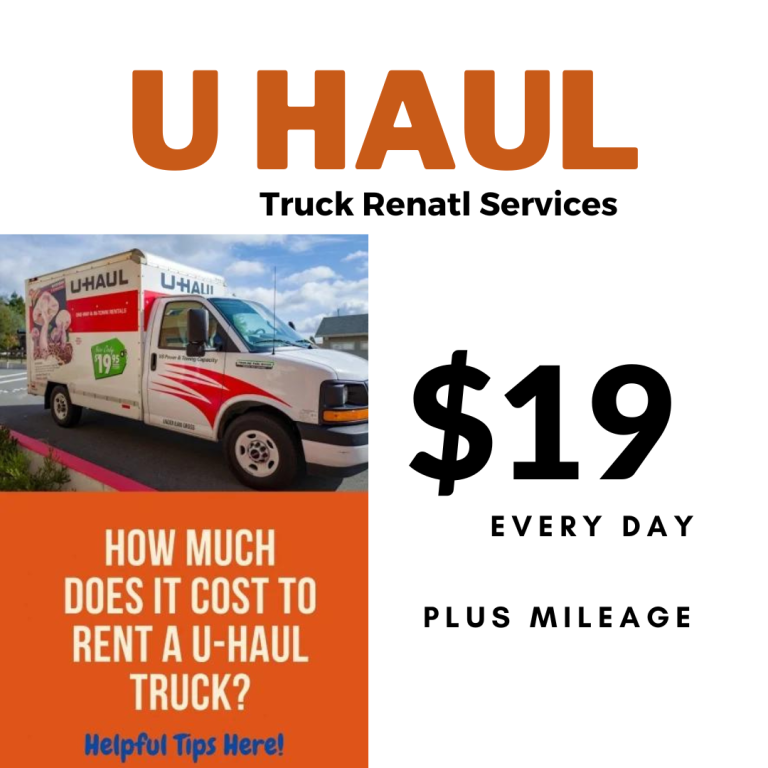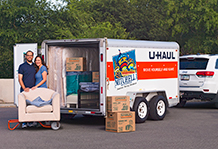Exploring the Dynamics of POS U-Haul Net Mobile: Streamlining Moving Operations

Exploring the Dynamics of POS U-Haul Net Mobile: Streamlining Moving Operations
In the fast-paced world of logistics and rental services, efficiency, accuracy, and customer satisfaction are paramount. For a giant like U-Haul, which manages a vast fleet of vehicles and equipment across countless locations, having a robust and agile system is not just an advantage—it’s a necessity. This is where the concept of "POS U-Haul Net Mobile" comes into play. It represents the sophisticated integration of Point of Sale (POS) functionalities with U-Haul’s extensive network, delivered through a mobile platform, potentially leveraging the .NET framework for its backend infrastructure.
At its core, POS U-Haul Net Mobile refers to a specialized, portable, and interconnected system designed to empower U-Haul personnel, whether at corporate centers, independent dealer locations, or even on the go, to manage rentals, process payments, and access critical data with unprecedented ease. It transforms the traditional, often cumbersome, rental process into a streamlined, digital experience, significantly enhancing operational efficiency and improving the overall customer journey. This comprehensive article will delve into the various facets of this system, exploring its features, benefits, operational mechanics, and strategic importance in modern moving and storage solutions.
What is POS U-Haul Net Mobile?
To fully grasp the essence of POS U-Haul Net Mobile, let’s break down its components:
- POS (Point of Sale): This is the heart of any transaction system. In the U-Haul context, it’s the digital interface and associated hardware (like card readers and mobile devices) where rental agreements are initiated, modifications are made, payments are processed, and equipment is checked out or returned. It digitizes all aspects of a rental transaction.
- U-Haul: The specific context is U-Haul International, one of the largest moving and storage rental companies in North America. This implies the system is tailored to U-Haul’s unique operational requirements, inventory (trucks, trailers, storage units, moving supplies), and customer service protocols.
- Net: This element can have a dual meaning. Firstly, it refers to the network connectivity (internet) essential for real-time data synchronization across U-Haul’s vast operational footprint. Secondly, it could imply the use of the .NET framework – a powerful, versatile software development platform by Microsoft. If utilized, .NET would provide a robust, secure, and scalable foundation for the system’s backend applications, ensuring seamless data exchange and high performance.
- Mobile: This signifies the system’s portability. Instead of being tied to a desktop computer, U-Haul agents can use tablets, smartphones, or other handheld devices to conduct business anywhere—at the rental counter, in the truck yard, or even roadside. This mobility is crucial for flexibility and reducing customer wait times.
Together, POS U-Haul Net Mobile represents a sophisticated, integrated mobile point-of-sale solution that allows U-Haul and its independent dealers to efficiently manage their rental business, from inventory allocation and reservation management to secure payment processing and digital contract signing, all while being connected to U-Haul’s centralized database.
Key Features and Functionalities
The advanced capabilities of a POS U-Haul Net Mobile system are designed to cover every aspect of the rental process:
- Rental Agreement Creation and Management: Quickly generate, modify, and finalize rental contracts with digital signatures, eliminating paper waste and speeding up transactions.
- Secure Payment Processing: Accept various payment methods, including credit/debit cards, mobile payments, and potentially digital wallets, all secured with industry-standard encryption and PCI compliance.
- Real-Time Inventory Lookup and Allocation: Instantly check the availability of trucks, trailers, and other equipment across different locations, enabling efficient allocation and reservations.
- Customer Profile Management: Access existing customer data, create new profiles, and manage rental history, preferences, and contact information, personalizing the service experience.
- Digital Signatures and Contract Storage: Capture legally binding digital signatures and store all contracts electronically, making retrieval easy and reducing physical storage needs.
- Reporting and Analytics: Generate reports on sales, inventory, customer trends, and operational performance, providing valuable insights for business optimization.
- Integration with U-Haul’s Central System: Seamlessly synchronize data with U-Haul’s main enterprise resource planning (ERP) systems, ensuring consistent information across all channels.
- Damage Inspection & Photo Capture: Allow agents to document vehicle condition with photos directly within the app, enhancing transparency and dispute resolution.
Benefits for U-Haul, its Dealers, and Customers
The adoption of a comprehensive mobile POS system brings substantial advantages to all stakeholders:
For U-Haul and its Dealers:
- Increased Efficiency: Expedites transactions, reduces manual data entry, and minimizes paperwork, freeing up staff to focus on customer service.
- Enhanced Accuracy: Digital input reduces errors associated with manual forms, ensuring correct billing and inventory records.
- Better Inventory Control: Real-time visibility into equipment availability and location helps optimize fleet utilization and prevents overbooking.
- Improved Data Accessibility: Staff can access critical customer and rental information instantly, leading to faster problem resolution and better service.
- Scalability and Flexibility: Easily onboard new locations or temporary staff, and adapt to peak rental seasons without significant infrastructure changes.
- Reduced Operational Costs: Saves on printing, storage, and administrative overheads, while also potentially reducing training time due to intuitive interfaces.
For Customers:
- Faster Service: Quick check-in and check-out processes minimize wait times, especially during busy periods.
- Convenience: The ability to complete transactions anywhere on the premises (e.g., in the truck yard) adds to customer convenience.
- Transparency: Digital contracts and clear pricing information ensure customers are well-informed.
- Personalized Experience: Access to rental history allows for tailored recommendations and smoother repeat rentals.
- Secure Transactions: Confidence that their payment and personal information are handled securely.
How POS U-Haul Net Mobile Works: A User’s Perspective
Imagine a customer arriving at a U-Haul location to pick up a reserved truck. Here’s how the mobile POS system might streamline their experience:
- Customer Arrival & Check-in: The U-Haul agent, equipped with a rugged tablet or smartphone, greets the customer. They quickly pull up the reservation using the customer’s name or reservation number on the mobile app.
- Verification & Customization: The agent verifies the customer’s driver’s license and confirms rental details. The system might prompt for additional items like dollies, furniture pads, or insurance, which can be added instantly.
- Vehicle Inspection: The agent and customer walk to the assigned truck. The agent uses the mobile device to perform a digital pre-rental inspection, noting existing damage with photos and capturing digital signatures for acknowledgment.
- Payment Processing: Back at the counter or even by the truck, the agent presents the final rental summary on the tablet. The customer can then swipe, tap, or insert their card into a connected mobile card reader, or use a digital wallet. The transaction is processed securely in real-time.
- Digital Agreement & Handover: The customer reviews and digitally signs the rental agreement directly on the tablet screen. A digital receipt and contract are immediately emailed to them, or a physical receipt is printed from a compact mobile printer.
- Return Process: Upon return, the process is reversed. The agent performs a digital post-rental inspection, calculates final mileage and fuel, and processes any additional charges or refunds, all through the same mobile system.
Technological Underpinnings: .NET and Mobile Integration
The "Net" in POS U-Haul Net Mobile often implies a robust backend infrastructure, and the .NET framework is a prime candidate for such systems.
- .NET Framework: Microsoft’s .NET provides a comprehensive and secure environment for building enterprise-grade applications. If U-Haul utilizes .NET, it would likely power the server-side logic, database interactions, and API (Application Programming Interface) services that the mobile applications consume. This ensures high performance, security, and scalability for handling U-Haul’s vast transaction volume.
- Mobile App Development: The front-end mobile applications would be developed for iOS and Android platforms, using native development tools (Swift/Kotlin) or cross-platform frameworks (Xamarin, React Native, Flutter) that can seamlessly interact with the .NET backend via secure APIs.
- Cloud Integration: The system would likely leverage cloud computing (e.g., Azure, AWS) for hosting databases, application servers, and providing services like real-time data synchronization, analytics, and backup, ensuring high availability and disaster recovery.
- Security Protocols: Robust security measures, including data encryption (in transit and at rest), multi-factor authentication, and compliance with industry standards like PCI DSS (Payment Card Industry Data Security Standard), are critical for protecting sensitive customer and financial data.
Important Considerations and Best Practices
Implementing and maintaining a sophisticated system like POS U-Haul Net Mobile requires careful planning and adherence to best practices:
- Security First: Prioritize data encryption, secure network connections, regular security audits, and strict access controls to protect sensitive customer and financial data.
- Reliable Connectivity: While mobile POS systems should ideally have offline capabilities, ensuring reliable Wi-Fi or cellular data coverage is crucial for real-time synchronization and processing.
- Hardware Selection: Choose durable, reliable mobile devices (tablets, smartphones), secure card readers, and portable receipt printers that can withstand the rigors of daily use in various environments.
- Comprehensive Training: Provide thorough training for all staff on how to effectively use the mobile POS system, troubleshoot minor issues, and understand security protocols.
- Scalability: Ensure the system architecture can handle peak demand periods, such as holiday weekends or busy moving seasons, without performance degradation.
- Regular Updates and Maintenance: Implement a schedule for software updates, bug fixes, and security patches to keep the system running optimally and secure against new threats.
- User Experience (UX): Design an intuitive and user-friendly interface for the mobile application to minimize training time and reduce user errors.
Challenges and Solutions
While highly beneficial, mobile POS systems can present certain challenges:
- Connectivity Issues: Challenge: Sporadic internet access in remote locations or during outages can halt operations. Solution: Implement robust offline capabilities that allow transactions to be stored locally and synced once connectivity is restored. Provide redundant network options (Wi-Fi and cellular).
- Hardware Malfunctions: Challenge: Mobile devices can be dropped, damaged, or run out of battery. Solution: Invest in ruggedized devices, provide charging stations, and have spare equipment readily available. Implement quick replacement protocols.
- User Error: Challenge: Staff unfamiliarity or mistakes can lead to incorrect rentals or billing. Solution: Ongoing, comprehensive training, intuitive user interfaces with clear prompts, and built-in validation checks.
- Data Security Breaches: Challenge: Mobile endpoints can be vulnerable to security threats. Solution: Enforce strong encryption, regular software updates, multi-factor authentication, and strict adherence to data privacy regulations.
- Integration Complexities: Challenge: Integrating the mobile POS with existing U-Haul systems can be complex. Solution: Use well-documented APIs, modular system design, and thorough testing during development and deployment phases.
Practical Advice and Actionable Insights
For U-Haul operators and dealers, embracing and optimizing the POS U-Haul Net Mobile system means:
- Invest in Training: Ensure all staff are proficient. A well-trained team leverages the system’s full potential, leading to faster service and fewer errors.
- Prioritize Mobility: Don’t just use tablets at the counter. Empower staff to conduct transactions in the yard, during roadside assistance, or wherever the customer is, to truly capitalize on the "mobile" aspect.
- Leverage Data: Utilize the reporting features to gain insights into rental trends, popular equipment, and peak hours. This data can inform business decisions, staffing, and inventory management.
- Embrace Digital: Encourage customers to opt for digital receipts and contracts. This not only saves paper but also provides a convenient, easily retrievable record for them.
For customers, understanding this system means expecting a seamless, efficient, and modern rental experience. Don’t hesitate to ask questions if anything is unclear; the digital nature of the agreement often means more clarity and fewer surprises.
Pricing Table for POS U-Haul Net Mobile (Illustrative Example)
Please Note: The following table provides illustrative pricing categories and hypothetical costs for a comprehensive mobile POS system, similar to what U-Haul might utilize or what an independent dealer might consider. Actual U-Haul internal system costs are proprietary and not publicly disclosed. These figures are for conceptual understanding only.
| Component Category | Description | Estimated Cost (Per Unit/Annual) | Notes |
|---|---|---|---|
| Software License (POS App) | Annual license fee for the core mobile POS application. Often includes access to features, updates, and cloud synchronization services. | $50 – $150 per terminal/month | This could be a subscription model charged per active mobile device (terminal) or per user. For U-Haul, it might be an internal allocation cost. |
| Mobile Device Hardware | Ruggedized tablet or smartphone (e.g., iPad, Android tablet) used to run the POS application. | $400 – $1,200 per device | Cost varies significantly based on brand, specifications, and durability. U-Haul likely provides standardized devices to its locations. |
| Mobile Card Reader | EMV-compliant, secure device for processing credit/debit card payments (swipe, chip, tap). | $50 – $300 per reader | Essential for secure payment processing. May be Bluetooth-connected to the mobile device. |
| Portable Receipt Printer | Compact, Bluetooth-enabled thermal printer for physical receipts (optional, as digital receipts are common). | $150 – $400 per printer | Useful for customers who prefer a physical receipt. Battery-powered for mobility. |
| Connectivity (Data Plan) | Monthly cost for cellular data plan for mobile devices, ensuring internet access away from Wi-Fi. | $20 – $50 per device/month | Crucial for real-time data synchronization and transaction processing in areas without Wi-Fi. Often bundled with device procurement. |
| Maintenance & Support | Annual fee for technical support, troubleshooting, and system maintenance from the software provider. | $100 – $300 per terminal/year | Ensures operational continuity and quick resolution of issues. Could be included in the software license fee. |
| Training & Onboarding | Initial costs for training staff on the new system and setup assistance. | $0 – $500 (one-time) | May be included in the initial setup fee or provided as ongoing resources. For U-Haul, this is an internal operational cost. |
| Payment Processing Fees | Transaction fees charged by payment processors for each card transaction. | 1.5% – 3% + $0.10-$0.30 per trans. | These are standard fees for credit card processing and are separate from the POS system itself but are a cost of doing business. Often passed on to the merchant (U-Haul/dealer). |
| Backend Infrastructure | (Internal Cost for U-Haul) Servers, databases, cloud services, and network infrastructure supporting the entire system. | Significant, ongoing | This is a major internal cost for U-Haul as the system provider, not typically passed directly to individual dealers as a line item but rather absorbed into the overall operational model. Includes .NET framework licensing (if applicable) and cloud services. |
Frequently Asked Questions (FAQ)
Q1: What exactly is "POS U-Haul Net Mobile"?
A1: It refers to a mobile Point of Sale system specifically designed and utilized by U-Haul. It allows U-Haul staff to manage vehicle rentals, process payments, and access customer/inventory data using mobile devices like tablets or smartphones, connected to U-Haul’s central network (potentially built on a .NET backend).
Q2: Who uses this system?
A2: U-Haul corporate employees, independent U-Haul dealers, and staff at U-Haul rental locations primarily use this system to facilitate rental transactions and manage operations.
Q3: What are the main benefits of this system?
A3: Key benefits include faster rental processes, reduced paperwork, improved accuracy in transactions, real-time inventory management, enhanced customer service through quicker access to information, and the flexibility of mobile operations.
Q4: Is my payment information secure when using this system?
A4: Yes, U-Haul’s mobile POS system is designed with robust security measures, including data encryption and adherence to PCI DSS (Payment Card Industry Data Security Standard) requirements, to protect your financial information during transactions.
Q5: Can I rent a U-Haul using my personal smartphone with this system?
A5: While U-Haul has customer-facing mobile apps for reservations and self-service options, the "POS U-Haul Net Mobile" system is an internal tool used by U-Haul staff on their mobile devices to process your rental. You use your phone for your customer-side app, but the U-Haul agent uses their dedicated mobile POS system.
Q6: What happens if the internet connection is lost at a U-Haul location?
A6: A well-designed mobile POS system like U-Haul’s often includes offline capabilities. This means transactions can be processed and stored locally on the mobile device and then automatically synchronized with the central system once the internet connection is restored, minimizing disruptions.
Q7: Is this system only for U-Haul corporate locations, or do independent dealers also use it?
A7: The system is designed to be utilized by both U-Haul corporate locations and its network of independent dealers, ensuring consistency in operations and customer experience across the entire U-Haul network.
Q8: Does "Net" imply anything specific about the technology used?
A8: Yes, "Net" can refer to the underlying network connectivity essential for real-time data flow. Additionally, it often suggests that the system’s robust backend infrastructure may be built using the Microsoft .NET framework, known for its stability, security, and scalability in enterprise applications.
Conclusion
The evolution of U-Haul’s operational capabilities, significantly bolstered by systems like POS U-Haul Net Mobile, underscores a commitment to leveraging technology for superior service delivery. By integrating powerful Point of Sale functionalities with a mobile, interconnected framework, U-Haul streamlines its rental processes, empowers its vast network of dealers, and ultimately provides a faster, more efficient, and transparent experience for its customers. As the demand for convenient and immediate services continues to grow, such sophisticated mobile solutions will remain at the forefront of innovation, ensuring U-Haul continues to move people forward, one seamless rental at a time. This digital transformation is not just about technology; it’s about enhancing every aspect of the moving journey.
For more information on U-Haul’s services and dealer programs, visit the official U-Haul website.
